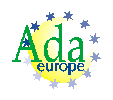Section 6: Subprograms
1
{subprogram}
{procedure}
{function}
A subprogram is a program unit or intrinsic operation
whose execution is invoked by a subprogram call. There are two forms
of subprogram: procedures and functions. A procedure call is a
statement;
a function call is an expression and returns a value. The definition
of a subprogram can be given in two parts: a subprogram declaration defining
its interface, and a
subprogram_body defining
its execution. [Operators and enumeration literals are functions.]
1.a
To be honest: A function call is an expression,
but more specifically it is a name.
1.b/2
Glossary entry: {Subprogram}
A subprogram is a section of program that can be executed in various
contexts. It is invoked by a subprogram call that may qualify the effect
of the subprogram through the passing of parameters. There are two forms
of subprograms: functions, which return values, and procedures, which
do not.
1.c/2
Glossary entry: {Function}
A function is a form of subprogram that returns a result and can be called
as part of an expression.
1.d/2
Glossary entry: {Procedure}
A procedure is a form of subprogram that does not return a result and
can only be called by a statement.
2
{callable entity}
A
callable entity is a subprogram or entry
(see Section 9).
{call} A
callable entity is invoked by a
call; that is, a subprogram call
or entry call.
{callable construct}
A
callable construct is a construct that defines
the action of a call upon a callable entity: a
subprogram_body,
entry_body, or
accept_statement.
2.a
Ramification: Note that “callable
entity” includes predefined operators, enumeration literals, and
abstract subprograms. “Call” includes calls of these things.
They do not have callable constructs, since they don't have completions.






 Sponsored by Ada-Europe
Sponsored by Ada-Europe